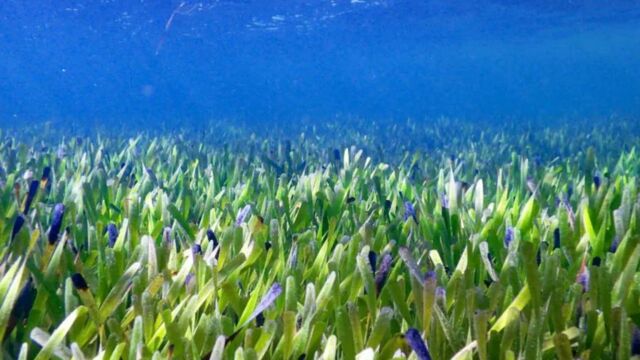Researchers discover the ‘biggest plant on Earth’, three times the size of Manhattan island

Researchers have discovered the ‘biggest plant on Earth’ off the coast of Australia. Located in the heart of Shark Bay, it covers an area about three times the size of Manhattan island...
At 200 square kilometres (77 sq miles), a plant discovered on a seabed off Australia covers about 20,000 football fields, about twice the area of Paris, or just over three times the size of Manhattan island, as reported by The Guardian.
Discover our latest podcast
In a research paper published on 1 June in the scientific journal Proceedings of the Royal Society B, a team of Australian researchers announced that they had discovered the ‘biggest plant on Earth,’ about 800 km north of Perth (Western Australia). This immense plant is located in the heart of Shark Bay, which has been a UNESCO World Heritage Site since 1991.
More under this adMore under this adAn underwater plant 200 km2 big
Elizabeth Sinclair, an evolutionary biologist at the School of Biological Sciences and the Oceans Institute of the University of Western Australia (UWA) and supervisor of the research, explained in a press release:
We were often asked how many different plants grow in this area (...) and this time we used genetic tools to answer this question.More under this adMore under this ad
After the analysis, the scientists were in for the surprise of their lives. Jane Edgeloe, a UWA student and lead author of the study, said:
The answer blew us away - there was only one.More under this adMore under this ad
The existing 200 sq km of ribbon weed meadows appear to have expanded from a single, colonising seedling.
The world's largest plant is an Australian seagrass clone - @NHM_Londonhttps://t.co/QVKVaQJsKwpic.twitter.com/AKiRE7X5tw
— CJS News (@CountrysideNews) June 1, 2022
The researchers reached this conclusion through a genetic analysis of more than 18,000 markers. Sinclair explained:
Whole genome duplication through polyploidy occurs when diploid 'parent' plants (which receive one pair of each chromosome) are hybridised. The new plant contains 100% of the genome of each parent, instead of the usual 50%.
Over 4,000 years old
And this plant is not new. According to the researchers, the Australian seagrass, also known as Posidonia australis, fibre-ball weed, or ribbon weed, is about 4,500 years old. And although its growth is unique to date, it is nevertheless largely explainable. Sinclair said:
More under this adMore under this adPolyploid plants are often found in places with extreme environmental conditions. They are usually sterile, but they can continue to grow in the absence of disturbance, and that is exactly what this giant seagrass has done.
This article has been translated from Gentside FR.
Read more:
⋙ A huge sinkhole with an entire ancient forest inside has been discovered
⋙ Climate change: A tiny marine predator that could help fight climate change has been discovered
⋙ Video: Rare discovery of a two-headed sea turtle in the USA